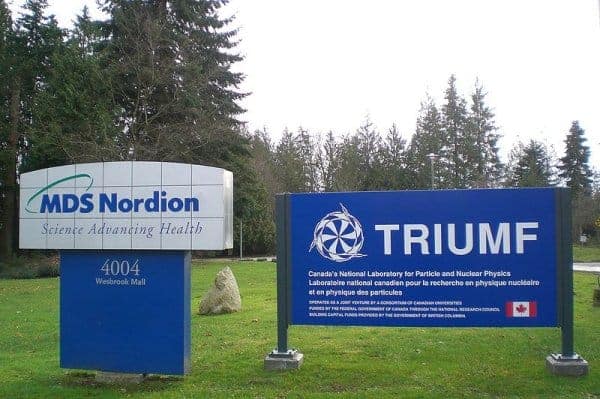In the realm of modern medicine, the intersection of physics and healthcare is illuminated by the vibrant glow of particle accelerators. These complex machines, often thought of as mere tools for high-energy physics research, have found a crucial and life-saving niche in the production of medical isotopes. By harnessing the potential of protons in an accelerator lab, scientists are embarking on a groundbreaking quest to revolutionize diagnostic imaging and targeted therapies in oncology.
The concept of producing medical isotopes using protons is emblematic of the broader pursuit of innovation within the scientific community. Much like an artist meticulously choosing hues for a canvas, researchers select specific target materials and energies to evoke the desired nuclear reactions. Just as an artist’s brush breathes life into the canvas, the high-energy protons interacting with isotopic targets yield a wondrous array of medically relevant isotopes. These isotopes play pivotal roles in diagnostics and treatments, particularly in the diagnosis and management of cancer.
At the heart of this endeavor lies cyclotron technology, a marvel of 20th-century physics that revolutionized medical isotope production. Within a cyclotron, protons are accelerated to impressive speeds before they collide with stable targets—often comprising lithium or enriched oxygen. This collision induces nuclear reactions, resulting in the transmutation of stable nuclei into radioactive isotopes. Such isotopes, like Fluorine-18 or Carbon-11, are essential for Positron Emission Tomography (PET) scans and other imaging modalities that enable clinicians to visualize metabolic processes and anatomical structures within the human body.
As the pendulum of time swings, the demand for medical isotopes continues to escalate, reflecting the increasing number of diagnostic procedures and therapeutic interventions. The global landscape of isotope production has grown increasingly intricate, encompassing a myriad of production facilities, research institutions, and academic collaborations. This growing interdependence emphasizes the need for domestic production avenues. Geopolitical tensions and supply chain vulnerabilities have galvanized researchers toward the development of sustainable and reliable sources of medical isotopes.
The quest for isotopes is not without challenges. The half-lives of many isotopes are exceedingly brief, necessitating their production close to the point of clinical use. Time—an ever-elusive concept—serves as both an enemy and a collaborator. For instance, Fluorine-18, which undergoes radioactive decay with a half-life of approximately 110 minutes, needs to be synthesized with remarkable efficiency. Herein lies the art of timing: an orchestra of technicians and researchers must harmoniously synchronize the production cycle to ensure that the isotope reaches the clinic while it is still viable.
Moreover, isotope production is not merely a mechanical operation; it is steeped in the science of engineering and nuclear physics. Engineers face the dual challenge of optimizing the structural integrity of the cyclotron while simultaneously ensuring that operations occur safely. Navigating the intricate aspects of radiation safety and regulatory compliance is paramount, as the utilization of high-energy protons entails significant responsibilities.
The potential of cyclotron-produced medical isotopes extends beyond diagnostics. In the realm of targeted radiotherapy, the intricacies of isotope production take on renewed significance. Radioisotopes can be designed to deliver targeted doses of radiation to cancerous tissues while sparing healthy cells, akin to a sniper’s precision in a chaotic battlefield. Such tailored approaches are emblematic of the ongoing paradigm shift towards personalized medicine, where treatments are tailored to the individual patient’s genetics and tumor characteristics, thus maximizing therapeutic efficacy.
The ongoing evolution of accelerator labs underscores the burgeoning interdisciplinary collaboration among physicists, chemists, cancer biologists, and clinicians. This collaborative spirit is akin to a symphony orchestra, where each musician contributes distinct skills toward a cohesive and powerful performance. Furthermore, innovative research into alternative target materials and accelerator designs continues to unfold. Advancements in compact accelerators could yield efficient isotope production systems, facilitating greater access to critical medical isotopes.
The implications extend beyond immediate patient care. Investing in accelerator labs dedicated to producing medical isotopes not only enhances healthcare infrastructure but also fosters education and scientific inquiry. These labs become crucibles of innovation, inspiring the next generation of scientists to aspire towards cutting-edge research and application. The ripple effects of such investments are manifold, potentially leading to breakthroughs in new therapies and improved diagnostic methodologies.
Despite the promise that medical isotopes herald, there exists an inherent ethical responsibility associated with their use. As research and development advance, it becomes paramount to ensure equitable access to isotope-based diagnostics and treatments, particularly for underserved populations. Just as the universe demands a balance of forces, the field of medical isotopes must strive for equitable distribution of its benefits across society.
In conclusion, the endeavor of producing medical isotopes in accelerator labs is a testament to the profound relationship between physics and medicine. The convergence of these disciplines has sparked a revolution in medical imaging and cancer therapy while unraveling the mysteries of the atomic nucleus. As the sun rises on the future of healthcare, it is the diligent work of researchers and practitioners dedicated to harnessing the enigmatic powers of protons that will continue to illuminate the path towards innovative therapies for generations to come.












